Bitumen Number 40
Bitumen Number 40 Description
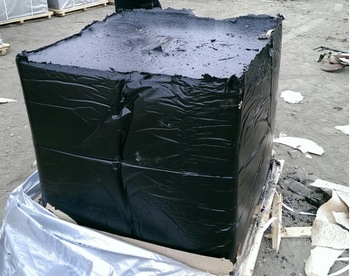
Bitumen 40 is a type of hard grade building asphalt with penetration starting from #40 that is why it is famous asphalt number 40. Bitumen Number 40 is available in bag and drum also the bulk tanker. This grade of asphalt building material is mostly using in the eastern Asia market especially Taiwan and China also the Philippine and Indonesia. Bitumen grade 40 is the most consumable hard asphalt which is a semi-solid grade of pure petroleum bitumen categorized in polycyclic aromatic hydrocarbons is normally used for different purposes in the construction business.
Blown Asphalt No. 40 Applications
1. For underground moisture, waterproofing works
2. For nuclear power engineering, pipeline engineering, bottom anticorrosion, asphalt production of the production
3. For waterproofing membrane, moisture-proof paper production, etc.
4. For Anti-corrosion paint and waterproof production
5. Used for road and bridge caulking use
Blown Asphalt No. 40 Specs
| Technical indicators | 10 |
| Penetration (25 ° C, 100 g, 5 s) / (0.1 mm) | 10-26 |
| The ductility (25 ° C, 5 cm / min) / cm is not less than | 1.5 |
| Softening point (ball method) / ℃ not less than | 95 |
| Solubility (trichloroethylene) /% is not less than | 99.5 |
| Evaporation loss (163 ° C, 5 h) /% no more than | 1 |
| After evaporation, the penetration ratio (25 ℃) /% is not less than | 65 |
| Flashpoint (open cup) / ℃ not less than | 230 |
| Brittle / ℃ | report |
Bitumen No.40 Packing
Bitumen Number 40 in various packing including kraft bag, meltable plastic bag, drum, and bulk, it is made by hot air in a controlled process until the desired specification is reached. Bitumen Number 40 can be supplied in volume quantity as well. Bitumen #40 means the softening point is 115°c and penetration is 15 desi millimeter is produced in compliance and conformity to ASTM standard and meets the mentioned specification.
Bitumen Number 30
Bitumen Number 30 Description
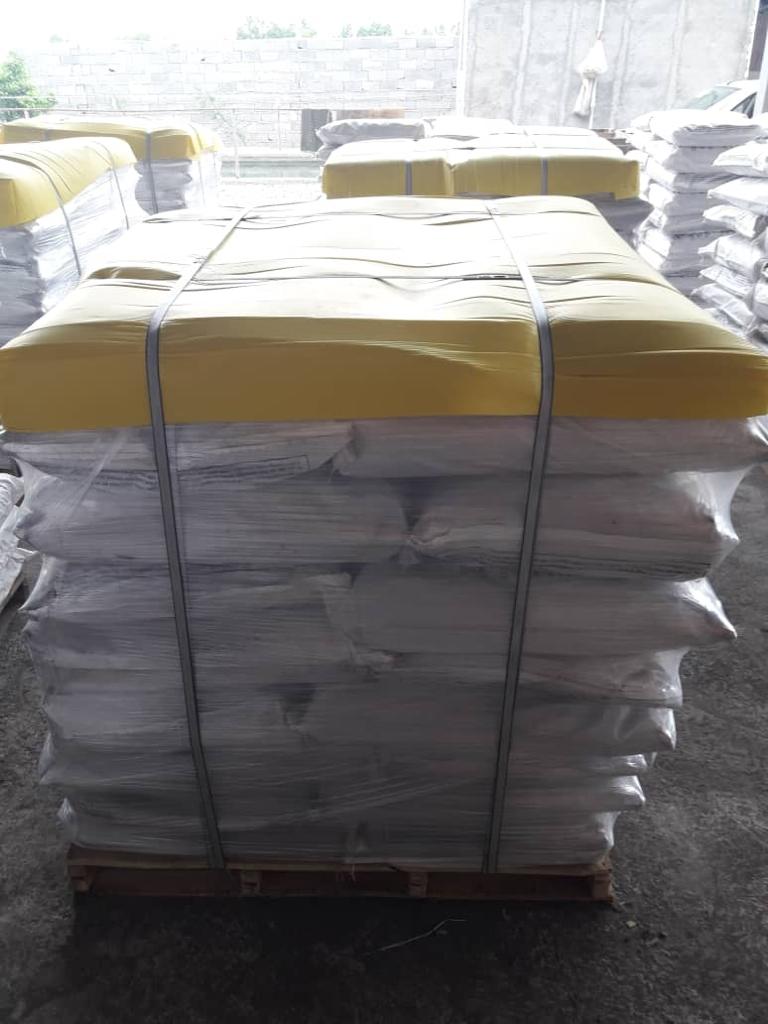
Bitumen30 is a type of hard grade building asphalt with penetration starting from #30 that is why it is famous asphaltum number 30. Bitumen Number 30 is available in bag and drum also the bulk tanker. This grade of asphalt building material is mostly using in the eastern Asia market especially Taiwan and China also the Philippine and Indonesia. Bitumen grade 30 is the most consumable hard asphalt which is a semi-solid grade of pure petroleum bitumen categorized in polycyclic aromatic hydrocarbons is normally used for different purposes in the construction business.
Blown Asphalt N0. 30 Applications
1. For underground moisture, waterproofing works
2. For nuclear power engineering, pipeline engineering, bottom anticorrosion, asphalt production of the production
3. For waterproofing membrane, moisture-proof paper production, etc.
4. For Anti-corrosion paint and waterproof production
5. Used for road and bridge caulking use
Blown Asphalt No. 30 Specs
| Technical indicators | 10 |
| Penetration (25 ° C, 100 g, 5 s) / (0.1 mm) | 10-26 |
| The ductility (25 ° C, 5 cm / min) / cm is not less than | 1.5 |
| Softening point (ball method) / ℃ not less than | 95 |
| Solubility (trichloroethylene) /% is not less than | 99.5 |
| Evaporation loss (163 ° C, 5 h) /% no more than | 1 |
| After evaporation, the penetration ratio (25 ℃) /% is not less than | 65 |
| Flashpoint (open cup) / ℃ not less than | 230 |
| Brittle / ℃ | report |
Bitumen No.30 Packing
Bitumen Number 30 in various packing including kraft bag, meltable plastic bag, drum, and bulk, it is made by hot air in a controlled process until the desired specification is reached. bitumen Number 30 can be supplied in volume quantity as well. Bitumen #30 means the softening point is 115°c and penetration is 15 desi millimeter is produced in compliance and conformity to Astm standard and meets the mentioned specification.
Bitumen Number 10
Bitumen Number 10 Description
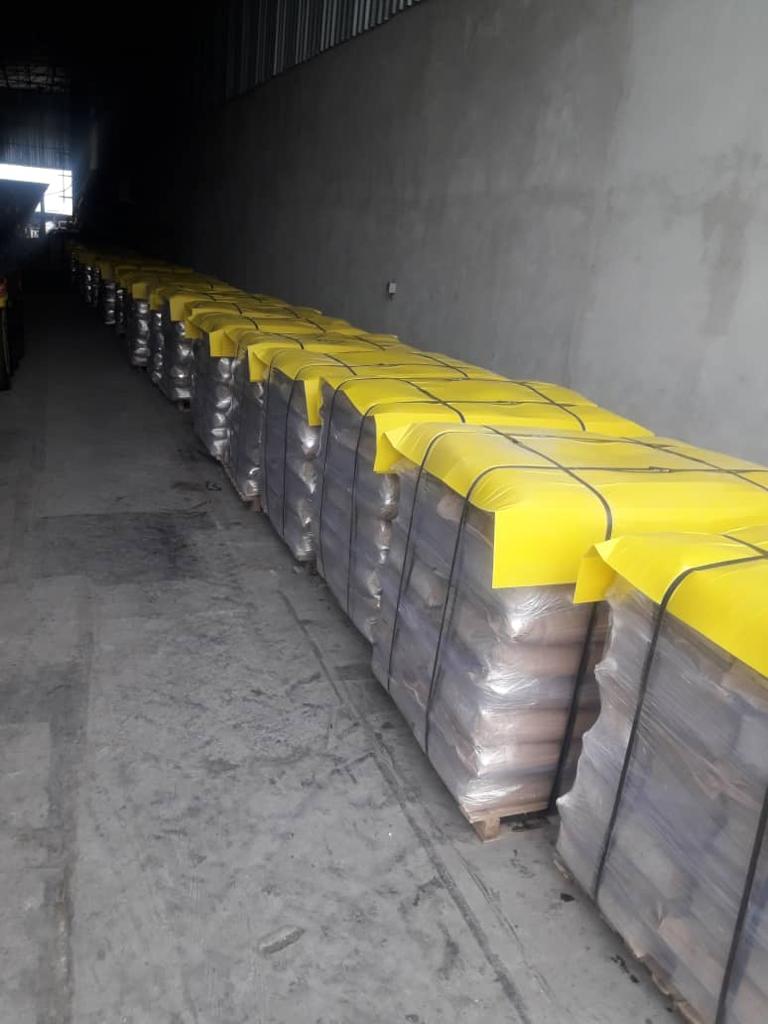
Bitumen 10 is a type of hard grade building asphalt with penetration starting from #10 that is why it is famous asphaltum number 10. Bitumen Number 10 is available in bag and drum also the bulk tanker. This grade of asphalt building material is mostly using in the eastern Asia market especially Taiwan and China also the Philippine and Indonesia. Bitumen grade 10 is the most consumable hard asphalt which is a semi-solid grade of pure petroleum bitumen categorized in polycyclic aromatic hydrocarbons is normally used for different purposes in the construction business.
Blown Asphalt N0. 10 Applications
1. For underground moisture, waterproofing works
2. For nuclear power engineering, pipeline engineering, bottom anticorrosion, asphalt production of the production
3. For waterproofing membrane, moisture-proof paper production, etc.
4. For Anti-corrosion paint and waterproof production
5. Used for road and bridge caulking use
Blown Asphalt No. 10 Specs
| Technical indicators | 10 |
| Penetration (25 ° C, 100 g, 5 s) / (0.1 mm) | 10-26 |
| The ductility (25 ° C, 5 cm / min) / cm is not less than | 1.5 |
| Softening point (ball method) / ℃ not less than | 95 |
| Solubility (trichloroethylene) /% is not less than | 99.5 |
| Evaporation loss (163 ° C, 5 h) /% no more than | 1 |
| After evaporation, the penetration ratio (25 ℃) /% is not less than | 65 |
| Flashpoint (open cup) / ℃ not less than | 230 |
| Brittle / ℃ | report |
Bitumen No.10 Packing
Bitumen Number 10 in various packing including kraft bag, meltable plastic bag, drum, and bulk, it is made by hot air in a controlled process until the desired specification is reached. bitumen Number 10 can be supplied in volume quantity as well. Bitumen #10 means the softening point is 115°c and penetration is 15 desi millimeter is produced in compliance and conformity to Astm standard and meets the mentioned specification.
Oxidized Bitumen 75/25
Oxidized Bitumen 75/25 Description

Oxidized Bitumen 75/25 is an oxidized Bitumen produced by oxidizing a selected petroleum asphalts without adding the catalyst. Bitumen 75/25 has a high softening point, high flash point and it is highly stable during melting. This kind of Blown Asphalt is mostly using in the Mediterranean and especially the morocco market.
Blown Asphalt 75/25 is produced by the air-blowing of penetration grade bitumen. This is done at high temperatures, resulting in a material of a much higher penetration index.
Bitumen 75/25 is based on petroleum bitumen which is made by blowing bitumen 60/70 by very hot air. The designation of the Oxidised bitumen 75/25 refers to the midpoint of the softening point acceptance criteria.
Blown Asphalt is a solid or semi-black solid material and gradually liquid when heated. Oxidized Bitumen grades are blown or oxidized bitumen‘s which are produced by passing air through soft bitumen under controlled temperature conditions. This process gives the bitumen more rubbery properties than penetration or hard grade bitumens and a variety of uses in industrial applications.
Bitumen 75/25 is produced by either Continuous or Staggered Blowing Process. Heated Penetration Grade Bitumen under controlled environment is blown with air which controls the Oil Content in the Bitumen while it oxidized. The different grades for suited applications produced are designated by two numbers to indicate the mid-points of their softening point and penetration ranges.
As said before, Bitumen 75/25 is based on petroleum bitumen which is made by blowing bitumen 60/70 by very hot air. In addition, the numbers relate to the midpoint of the material’s softening point and penetration respectively. The softening point value measured by the Ring and Ball method as determined by ASTM D36. Also, the penetration value is in 1/10 mm as determined by IP49 or ASTM- D5.
Oxidized Bitumen 75/25 Applications
Blown Asphalt 75/25 grades are produced by passing air through soft bitumen under controlled temperature conditions. This process gives the bitumen more rubbery properties than penetration or hard grade bitumen and enables the product to serve a variety of uses in industrial applications. These grades are suitable for sealing saw cuts and joints where there is expected to be the minimum amount of moving in the joint. Their wide temperature range prevents bleeding in high-temperature applications. They can also be used for industrial applications such as pipe coating, roofing, waterproofing, flooring, mastics, sound damping, carpet backing, adhesive and electrical applications. Hard bitumen under controlled temperature conditions is widely used as an anti-slip layer compound in the piling industry, for the manufacture of roofing felts, the roofing and waterproofing industries, for sound dampening felts and undercarriage sealant in the automotive industry, electric cable joint protection, joint filling compound, sealant compound, and many others. Also used in sealing saw cuts and joints where expected movements are minimum.
Technical Advantages of Blown Asphalt 75/25
- Durability
- Flexibility
- Water-Resistant
- Chemical Stability
Compared to paving grade bitumen:
- Reduced temperature susceptibility
- Exhibits a more ‘solid’ nature at ambient temperatures
- High penetration index
Recommendations for Handling / Storage
The heating of packaged bitumen is a critical phase in most of the final uses. Typically, the packaged material is heated and melted in boilers out on site.
However, control at the heating phase is very important in terms of health and safety as well as in maintaining the quality of the product.
A note must be taken of the maximum safe handling temperature of 230 C and this should not be abused. Bitumen is a poor conductor of heat, consequently, control of the heating phase is of paramount importance.
The Oxidized Bitumen material should be broken up prior to placement in the boiler. This exposes a larger surface area to the heat and encourages a more even heating regime. Without the larger exposed surface area, aggressive heating at the base and sides of the boiler may well result in localized overheating, altering the characteristics of the modified bitumen, and potentially causing thermal cracking of the bitumen, creating the release of low lash vapors. The flashpoint of the oxidized bitumen then becomes irrelevant; as these low flash vapors determine the fire risk.
Melted bitumen should not be left in the boiler and reheated from cold, as there is then a high potential for localized overheating around the heating area (lack of convection means poor heat transfer) and potential development of a pressurized pocket of low flash vapors.
Be aware of the placement of any temperature monitoring or control devices. As a result of the poor thermal conductivity of the bitumen, a thermometer in the bitumen some distance from the heat source could read significantly different (even hundreds of degrees) from the true temperature of the bitumen near the heat source.
For Health and Safety information, please make reference to the relevant MSDS.
Health & Safety
Workers should wear protective masks, gloves, and goggles during application. The asphalt can be removed from equipment and tools with kerosene or gasoline. Care should be taken when heating Blown Asphalt 75/25 to avoid overheating
Oxidized Bitumen 75/25 is a dark industrial bitumen. Petroleum residue modified by the oxidation process. In addition, Blown Asphalt is produced by passing air through bitumen under a controlled temperature state. Its stability ranges from highly viscous to solid. Blown Asphalt grade has technical advantages such as durability, flexibility, water-resistant and chemical stability. There is also a different grade of blown bitumen.
Blown Grade Asphalt shall be broken up into small pieces and heated slowly to the application temperature of 220ºC to 230ºC.
Packing of Oxidized Bitumen 75/25
Oxidized Bitumen 75/25 in various packing, including bitumen 75/25 is available in 20 & 50 kg Kraft Paper Bags / Poly Amide Bags, 25 kg Carton box, and 150, 180, 200kg Steel Drums. In addition, oxidized bitumen packing also palletize, 40 bags can stack on the pallet. 20 pallets can load to the 20ft container.
Technical Data Sheet of Blown Asphalt 75/25
| Bitumen 75/25 | Test method | Unit | Specification |
| Specific gravity @25/25 C | ASTM D70 | (Kg/m3) | 1.05 approx. |
| Penetration @ 25°c | ASTM D5 | mm/10 | 30/40 |
| Softening point °c | ASTM D36 | °C | 70/80 |
| Loss on heating(wt) % | ASTM D6 | Wt. % | 0.2 max |
| Flashpoint c | ASTM D92 | °C | 250 min |
| Solubility is CS2(wt) % | ASTM D4 | Wt. % | 99.5 max |
| Spot test | A.A.S.H.T.O 102 | — | Negative |
Oxidized Bitumen 75/35
Oxidized Bitumen 75/35 Description
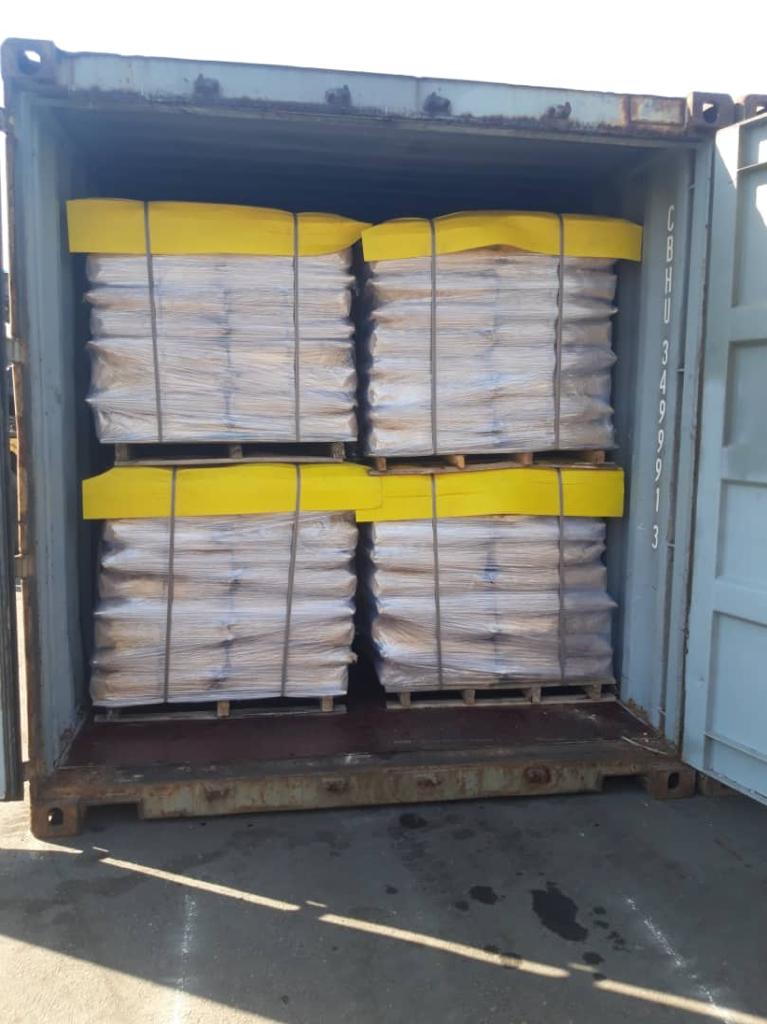
Blown Asphalt 75/35 is an oxidized Bitumen produced by oxidizing a selected petroleum asphalts without adding the catalyst. Bitumen 75/35 has a high softening point, high flash point and it is highly stable during melting. This kind of Blown Asphalt is mostly using in the Mediterranean and especially the morocco market.
Blown Asphalt 75/35 is produced by the air-blowing of penetration grade bitumen. This is done at high temperatures, resulting in a material of a much higher penetration index.
Bitumen 75/35 is based on petroleum bitumen which is made by blowing bitumen 60/70 by very hot air. The designation of the Oxidised bitumen 75/35 refers to the midpoint of the softening point acceptance criteria.
Blown Asphalt is a solid or semi-black solid material and gradually liquid when heated. Oxidized Bitumen grades are blown or oxidized bitumen‘s which are produced by passing air through soft bitumen under controlled temperature conditions. This process gives the bitumen more rubbery properties than penetration or hard grade bitumens and a variety of uses in industrial applications.
Bitumen 75/35 is produced by either Continuous or Staggered Blowing Process. Heated Penetration Grade Bitumen under controlled environment is blown with air which controls the Oil Content in the Bitumen while it oxidized. The different grades for suited applications produced are designated by two numbers to indicate the mid-points of their softening point and penetration ranges.
As said before, Bitumen 75/35 is based on petroleum bitumen which is made by blowing bitumen 60/70 by very hot air. In addition, the numbers relate to the midpoint of the material’s softening point and penetration respectively. The softening point value measured by the Ring and Ball method as determined by ASTM D36. Also, the penetration value is in 1/10 mm as determined by IP49 or ASTM- D5.
Oxidized Bitumen 75/35 Applications
Blown Asphalt 75/35 grades are produced by passing air through soft bitumen under controlled temperature conditions. This process gives the bitumen more rubbery properties than penetration or hard grade bitumen and enables the product to serve a variety of uses in industrial applications. These grades are suitable for sealing saw cuts and joints where there is expected to be the minimum amount of moving in the joint. Their wide temperature range prevents bleeding in high-temperature applications. They can also be used for industrial applications such as pipe coating, roofing, waterproofing, flooring, mastics, sound damping, carpet backing, adhesive and electrical applications. Hard bitumen under controlled temperature conditions is widely used as an anti-slip layer compound in the piling industry, for the manufacture of roofing felts, the roofing and waterproofing industries, for sound dampening felts and undercarriage sealant in the automotive industry, electric cable joint protection, joint filling compound, sealant compound, and many others. Also used in sealing saw cuts and joints where expected movements are minimum.
Technical Advantages of Blown Asphalt 75/35
- Durability
- Flexibility
- Water-Resistant
- Chemical Stability
Compared to paving grade bitumen:
- Reduced temperature susceptibility
- Exhibits a more ‘solid’ nature at ambient temperatures
- High penetration index
Recommendations for Handling / Storage
The heating of packaged bitumen is a critical phase in most of the final uses. Typically, the packaged material is heated and melted in boilers out on site.
However, control at the heating phase is very important in terms of health and safety as well as in maintaining the quality of the product.
A note must be taken of the maximum safe handling temperature of 230 C and this should not be abused. Bitumen is a poor conductor of heat, consequently, control of the heating phase is of paramount importance.
The Oxidized Bitumen material should be broken up prior to placement in the boiler. This exposes a larger surface area to the heat and encourages a more even heating regime. Without the larger exposed surface area, aggressive heating at the base and sides of the boiler may well result in localized overheating, altering the characteristics of the modified bitumen, and potentially causing thermal cracking of the bitumen, creating the release of low lash vapors. The flashpoint of the oxidized bitumen then becomes irrelevant; as these low flash vapors determine the fire risk.
Melted bitumen should not be left in the boiler and reheated from cold, as there is then a high potential for localized overheating around the heating area (lack of convection means poor heat transfer) and potential development of a pressurized pocket of low flash vapors.
Be aware of the placement of any temperature monitoring or control devices. As a result of the poor thermal conductivity of the bitumen, a thermometer in the bitumen some distance from the heat source could read significantly different (even hundreds of degrees) from the true temperature of the bitumen near the heat source.
For Health and Safety information, please make reference to the relevant MSDS.
Health & Safety
Workers should wear protective masks, gloves, and goggles during application. The asphalt can be removed from equipment and tools with kerosene or gasoline. Care should be taken when heating Blown Asphalt 75/35 to avoid overheating
Oxidized Bitumen 75/35 is a dark industrial bitumen. Petroleum residue modified by the oxidation process. In addition, Blown Asphalt is produced by passing air through bitumen under a controlled temperature state. Its stability ranges from highly viscous to solid. Blown Asphalt grade has technical advantages such as durability, flexibility, water-resistant and chemical stability. There is also a different grade of blown bitumen.
Blown Grade Asphalt shall be broken up into small pieces and heated slowly to the application temperature of 220ºC to 230ºC.
Packing of Oxidized Bitumen 75/35
Blown Asphalt 75/35 in various packing, including bitumen 75/35 is available in 20 & 50 kg Kraft Paper Bags / Poly Amide Bags, 25 kg Carton box, and 150, 180, 200kg Steel Drums. In addition, oxidized bitumen packing also palletize, 40 bags can stack on the pallet. 20 pallets can load to the 20ft container.
Technical Data Sheet of Blown Asphalt 75/35
| Bitumen 75/35 | Test method | Unit | Specification |
| Specific gravity @25/25 C | ASTM D70 | (Kg/m3) | 1.05 approx. |
| Penetration @ 25°c | ASTM D5 | mm/10 | 30/40 |
| Softening point °c | ASTM D36 | °C | 70/80 |
| Loss on heating(wt) % | ASTM D6 | Wt. % | 0.2 max |
| Flashpoint c | ASTM D92 | °C | 250 min |
| Solubility is CS2(wt) % | ASTM D4 | Wt. % | 99.5 max |
| Spot test | A.A.S.H.T.O 102 | — | Negative |
Oxidized Bitumen
Oxidized Bitumen Description
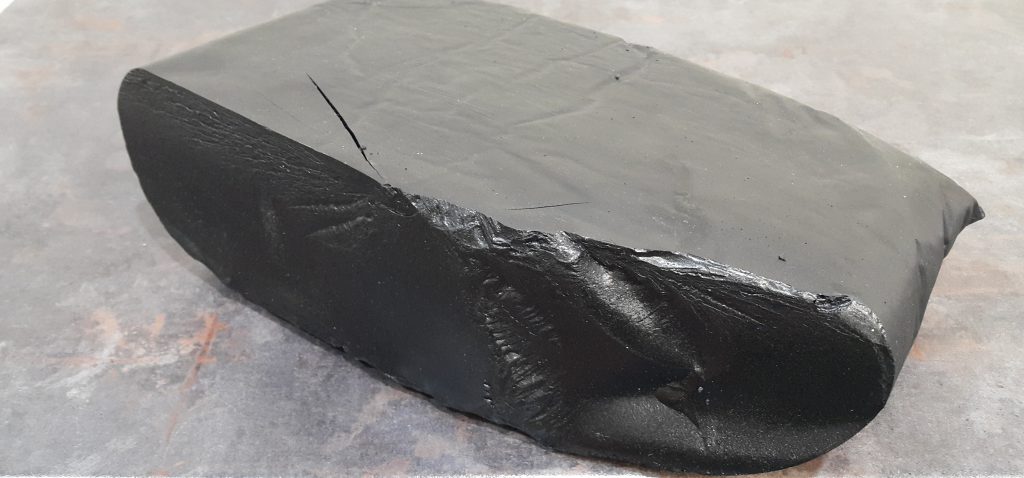
Blown bitumen grade or Oxidized Bitumen are produced by passing air through the penetration grades. This process gives the bitumen more rubbery properties than its original formula and they are simply harder bitumen. Hard bitumen under controlled temperature conditions is widely used as an anti-slip layer compound in the piling industry, for manufacture of roofing felts, the roofing and waterproofing industries, for sound dampening felts and under carriage sealant in the automotive industry, electric cable joint protection, joint filling compound, sealant compound and many others. Also used in sealing saw cuts and joints where expected movements are minimum. It is also used in the manufacturing of bituminous marine mastic for the oil & gas pipeline joints.
The most popular grades are; 95/25, 85/35, 90/40 and 115/15. We are also capable of producing other grades of Blown Bitumen upon request by our customers. Blown Bitumen high softening temperatures qualify them as excellent sealant for prevention from bleeding in high temperature applications. Blown Grade Bitumen shall be broken up into small pieces (for blown grade in molded cake form) and heated slowly to the application temperature of 220ºC to 230ºC. blown Bitumen is predominantly used in the piling industry as an anti slip compound for the manufacture of under carriage sealants in the automobile industry. It is also used as a sealant compound, as a joint filling compound apart from being used in the manufacture of roofing felts and sound dampening felts. Further, Blown Bitumen is used in the manufacture of bituminous marine mastic, which is required for the oil and gas pipeline joints. blown Bitumen is available in different grades like 95/25, 85/25, 75/25, 90/40 and 115/15. Tavoil is also capable of producing other grades of Oxidized Bitumen according to the specifications of individual clients.
Oxidized Bitumen Characteristics
Some of the major advantages of Oxidized Bitumen are that it is completely water resistant, highly flexible and durable. Further, it is chemically very stable. blown bitumen is a very flexible compound that is not only chemically stable but also a very durable compound apart from being completely water resistant. Lastly, Blown Bitumen has some very prominent technical advantages that makes it a very sought after compound in various applications.
Blown Bitumen Applications
Oxidized bitumens are used almost entirely for industrial applications, eg roofing, flooring mastics, pipe coatings, paints, etc, and are specified and designated by both softening point and penetration tests.
• Used As a bonding bitumen for roofing sheet membranes.
• Used As a hot-applied waterproofing layer.
• Used in Carpet tile manufacture.
• Used As a raw material for liquid bitumen coatings.
• Used in production of bituminous paint, mastic.
• Used in rust proof pipe coatings.
• Used as an anti-slip layer compound in the piling industry.
• Used in production of roofing and sound dampening felts.
• Used as under carriage sealant in the automobile industry, electric cable joint protection, joint filling compound, sealant compound and much more in our day to day life.
We are also capable of producing other grades of Blown Bitumen upon request by our customers. Oxidized Bitumen high softening temperatures qualify them as the excellent sealant for prevention from bleeding in high-temperature applications. Blown Grade Bitumen shall be broken up into small pieces (for the blown grade in molded cake form) and heated slowly to the application temperature of 220ºC to 230ºC. Oxidized Bitumen is predominantly used in the piling industry as an anti-slip compound for the manufacture of undercarriage sealants in the automobile industry. It is also used as a sealant compound, as a joint filling compound apart from being used in the manufacture of roofing felts and sound dampening felts. Further, Oxidized Bitumen is used in the manufacture of bituminous marine mastic, which is required for the oil and gas pipeline joints. This Oxidized Bitumen is available in different grades like 95/25, 85/25, 75/25, 90/40 and 115/15. Oxidized is also capable of producing other grades of Oxidized Bitumen according to the specifications of individual clients
Oxidized Bitumen Grades are suitable for sealing saw cuts and joints where there is expected to be the minimum amount of moving in the joint. Their wide temperature range prevents bleeding in high-temperature applications. Oxidized bitumen can also be used in industrial applications like roofing, flooring, mastics, pipe coatings, electrical applications to name a few.
Oxidised bitumen ” Oxidized Bitumen, Oxidized Asphalt ” range is used in the waterproofing industries, for carpet-backing, corrosion protection, acoustic panels and the manufacture of paints, amongst other applications.
Air-blowing: The manufacturing process used to make oxidized roofing asphalts in which air is blown through an asphalt flux. An exothermic oxidation reaction occurs, yielding an asphalt that is harder, more viscous, less volatile, and less temperature-susceptible than the asphalt flux used as the feedstock to the process.
Asphalt, oxidized (blown or air-refined) (CAS number 64742–93–4): Asphalt treated by blowing air through it at elevated temperatures to produce physical properties required for the industrial use of the final product. Oxidized asphalts are used in roofing operations, pipe coating, undersealing for Portland cement concrete pavements, hydraulic applications, membrane envelopes, some paving-grade mixes [AI 1990b], and the manufacture of paints [Speight 1992].
Blowing still: A closed-process vessel fitted at its base with a sparger and used in the air-blowing process to make many types of roofing asphalt.
Coating asphalt: An air-blown or oxidized asphalt used to manufacture roofing materials used in a variety of roofing systems such as asphalt shingles, polymer-modified bitumen roofing, reinforcing and underlayment felts, and roll roofing products.
Modified bitumen: A roofing system based on membranes manufactured by impregnating or coating one or more fabric plies with a straight-run or oxidized asphalt modified using a polymer, usually atactic polypropylene (APP) or styrene-butadiene-styrene (SBS). Modified bitumen systems may be torch-applied or installed by adhesion in hot asphalt or a cold-applied, solvent-based asphalt adhesive (cutback asphalt). Modified bitumen systems are used on low-slope (primarily commercial or industrial) roofs.
